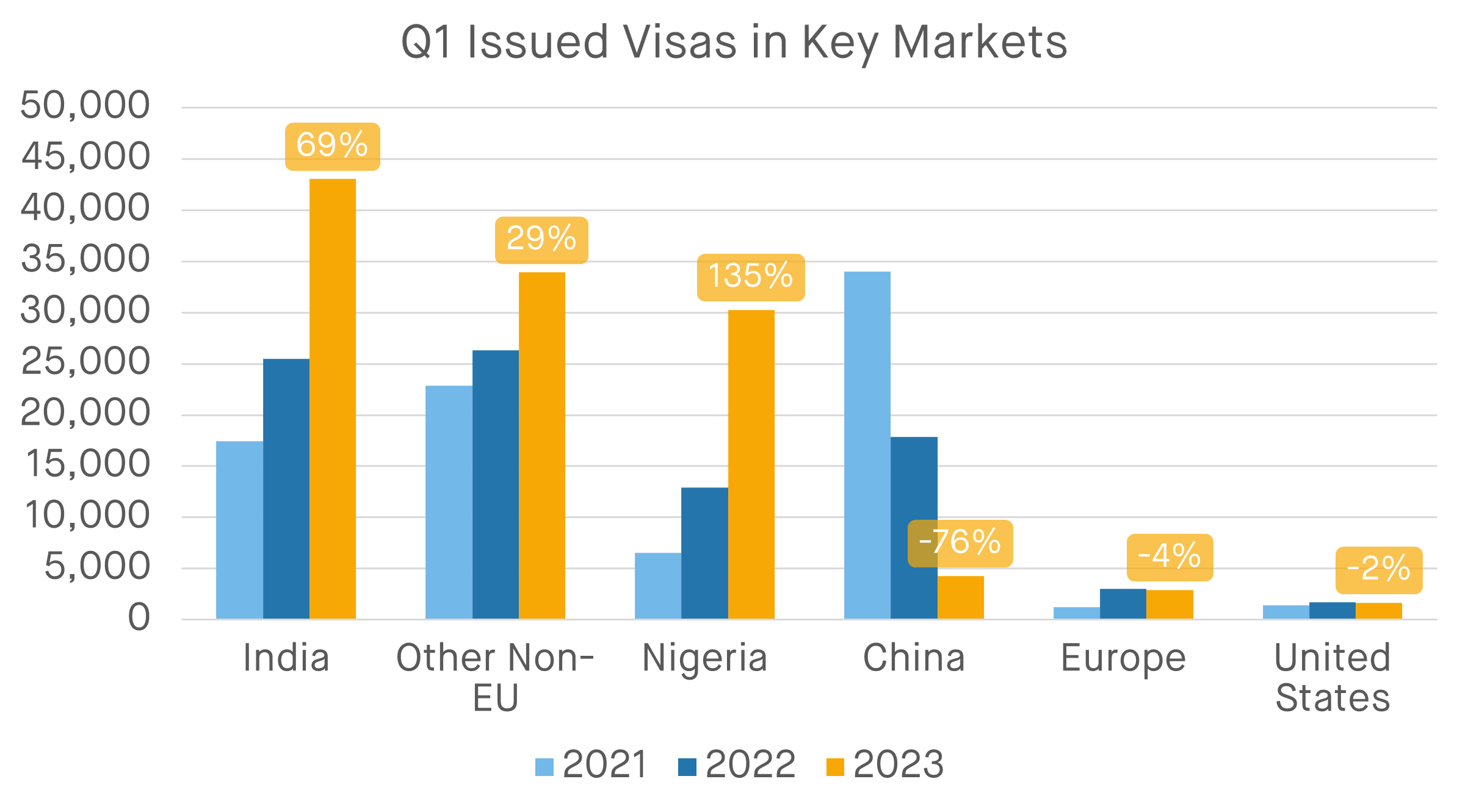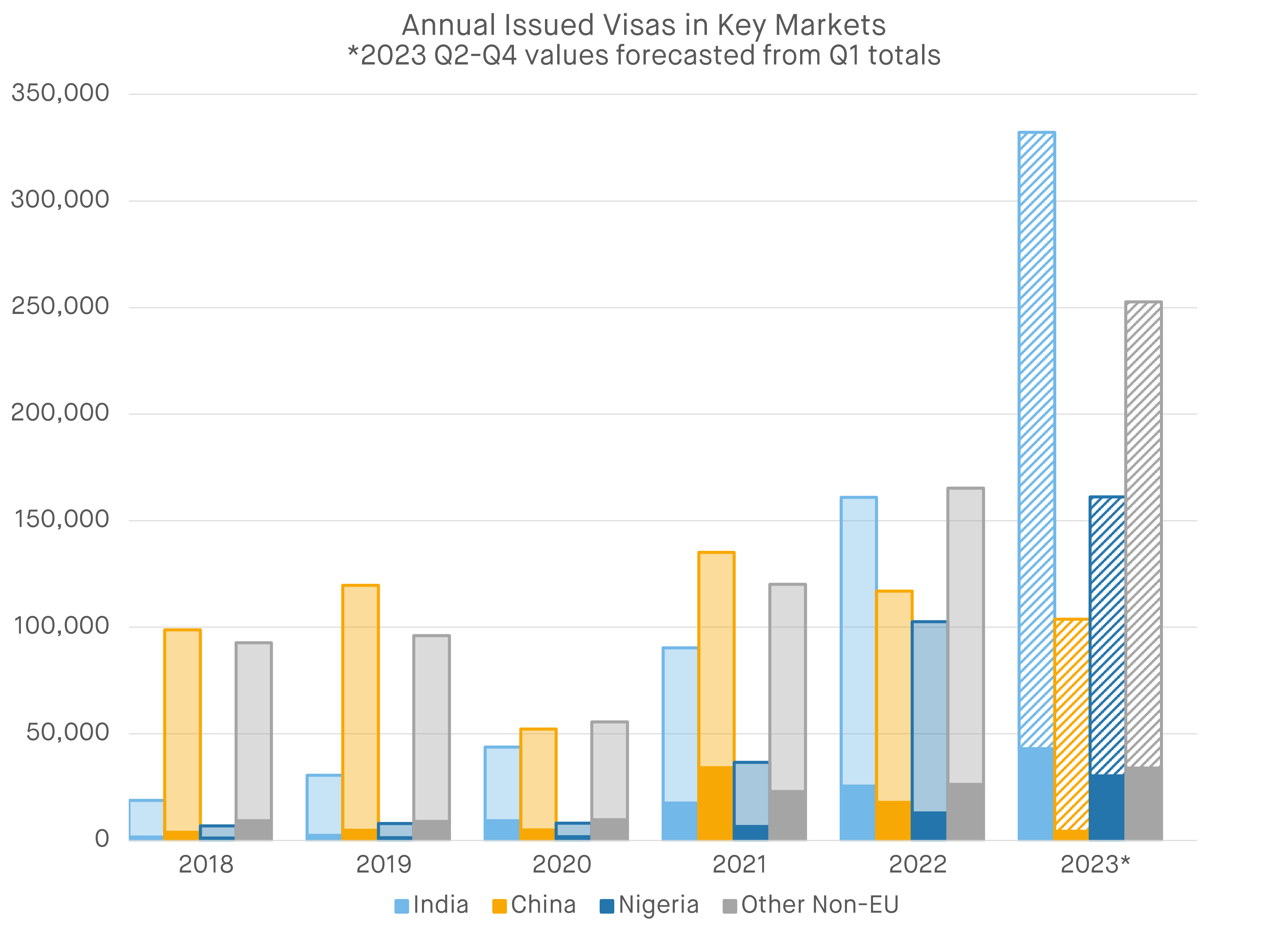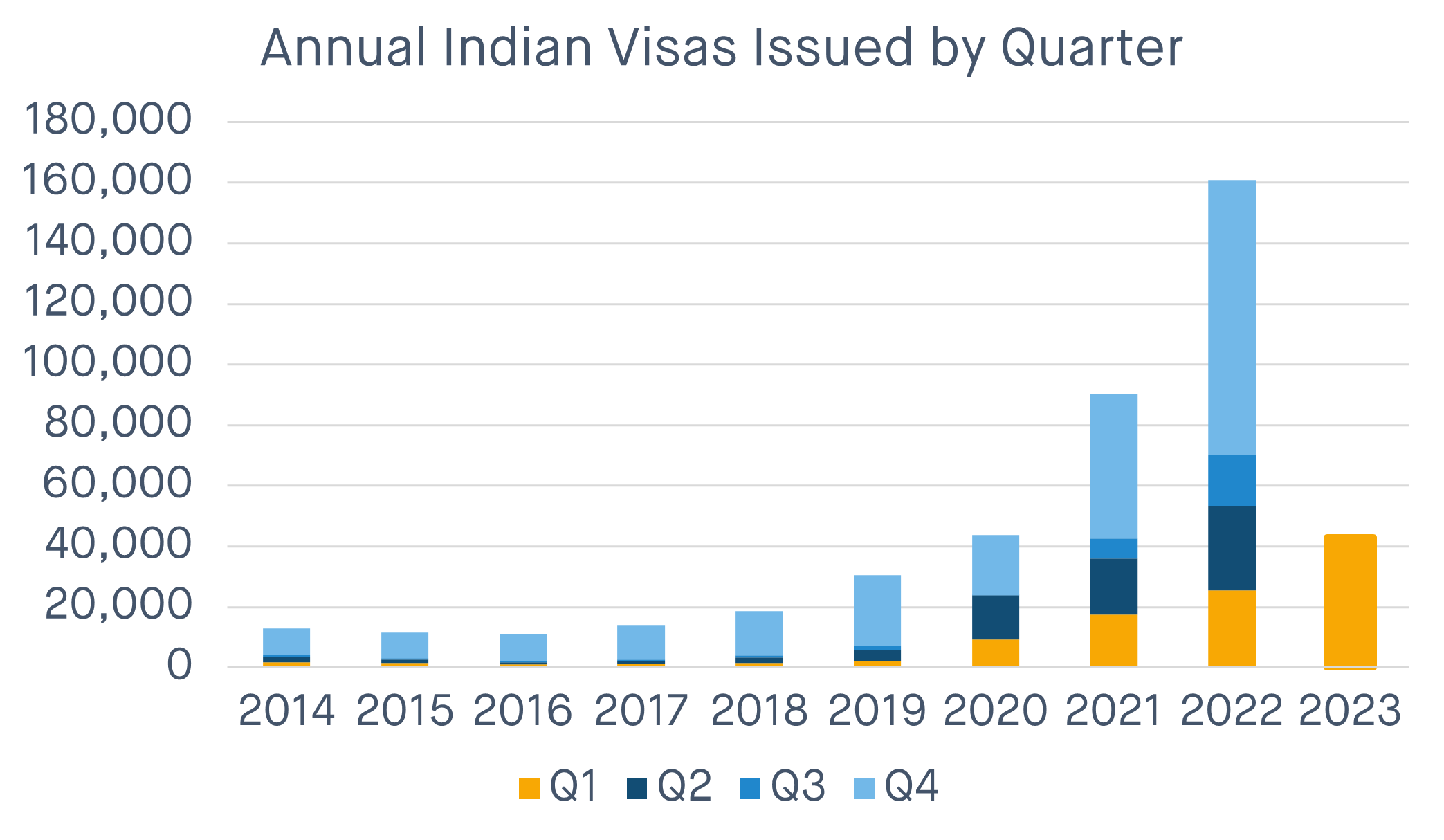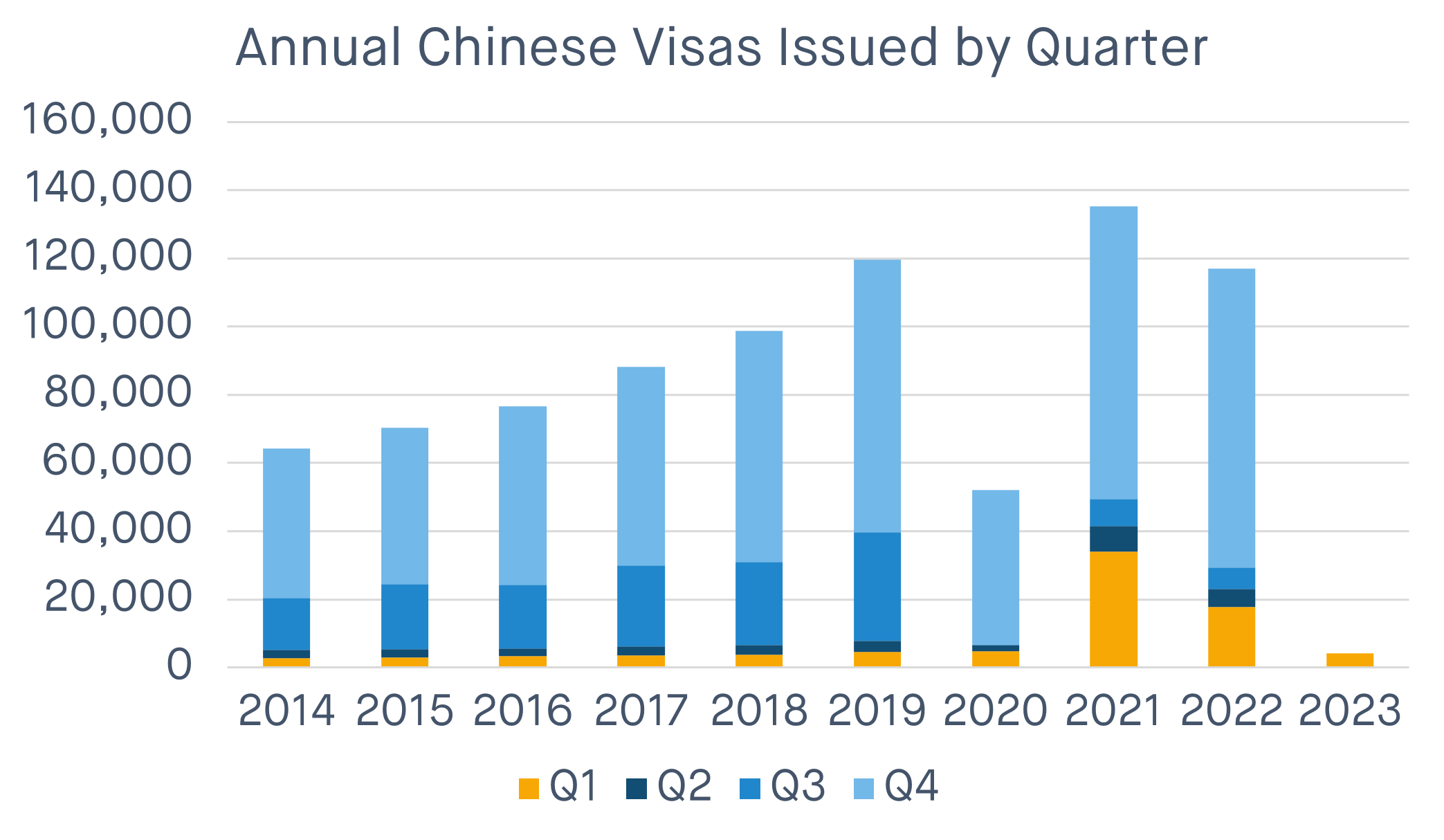Latest Visa Numbers Show a Drop in Chinese Students
Key findings:
- Compared to the same quarter last year, the number of visas issued to students from India and Nigeria have increased by 69% and 135% respectively
- 76% less visas were issued to Chinese students in Q1 2023 (Oct-Dec) than in the same period in the previous year
- Projections made using Q1 figures suggest that annual Indian visa numbers could more than double year-on-year, whilst Chinese numbers could fall by more than 11%
The chart above shows the visas issued in Q1 (Oct-Dec) in the last 3 academic years. The chart also shows the year-on-year percentage change reported in visas issued to each key market this academic year.
The data shows that the number of visas offered to students coming from India and Nigeria have continued to increase this year, by 69% and 135% respectively.
It is speculated that Nigerian students are being further attracted to the UK due to the new policy on post-study work visas which now allows international students to remain in the country for at least two years after their graduation. Further to this, the policy has also presented a significant opportunity for Nigerian students to relocate to the UK with their families.
Out of all foreign students, Nigerian students had the greatest number of accompanying dependents based on visas numbers in the last academic year. 44% of all dependent student visas issued in the UK during the 2022 academic year (Oct-21 to Sep-22) were to nationals coming from Nigeria, this is in spite of them making up just 17% of issued student visas.
Meanwhile, the number of visas being issued to students hailing from China fell by a drastic 79% in Q1-2023 compared to Q1-2022.
The potential drop in Chinese student numbers could be negative for the PBSA market, which is often targeted to Chinese and other Asia Pacific countries due to their usually high spending power whilst studying in the UK.
The decline reported could be as a direct result of universities attempting to better diversify their recruitment. Jo Johnson, former universities minister, commented on the issue: "To have one in three international students from outside the EU coming from China represents a material risk to the financial resilience of the UK higher education system and wider knowledge economy."
It is also likely that Q1 numbers reported in 2022 were somewhat inflated due to the impact of Covid, with many universities recording increases in postgraduate students, somewhat skewing the year-on-year comparisons.
The chart above shows visas issued to key markets in Q1 (Oct-Dec) and in total across the rest of the year for each academic year, dating back to 2018. The chart also includes prediction figures for the remaining 3 quarters in 2023, which have been calculated based on the average proportion of visas granted in the first three months of the academic year, and the Q1-2023 figures provided by gov.uk.
The data suggests that, if this year exhibits the same patterns in timings of visas being issued as previous years, the total number of Indian student visas granted could more than double year-on-year. The shift this would cause to the makeup of international students is likely to have a knock-on effect on the type of accommodation that will be demanded. Previous evidence suggests that Indian students tend to have a lower budget for accommodation than their counterparts from the Far East. They are also more likely to be seeking cluster-style accommodation over studio rooms. This may require the addition of new PBSA at lower price points to cater for the influx of students from different backgrounds.
We can also expect the number of visas issued to students coming from Nigeria and all other non-EU countries to continue to rise year-on-year. Predictions suggest that the total number of visas issued to Nigerian students this year could be 57% higher than the academic year ending in 2022. Similarly, other non-EU numbers could grow by 53% year-on-year.
Q1 (Oct-Dec) visas made up a much higher proportion of total visas issued to Chinese students in 2021 and 2022 than in previous years, likely as a result of covid; as such we have considered these years as anomalies and not included them in the projections made here. If the pattern seen in the past 2 years were to be the new norm, then the outlook for total Chinese visa numbers would be extremely negative based on the visa numbers so far this year, even as drastic as a 56% fall year-on-year. However, if the timings of Chinese visas return to the pre-covid pattern then we can expect a more manageable year-on-year fall in Chinese numbers slightly over 11%, as expressed in the chart above.
The chart above shows how total visas issued to Indian students have grown since 2014, broken down into academic quarters.
The data shows that the growth in Indian student visas has been quite sudden, 2022 numbers were 1348% higher than those reported in the 2016 academic year. In 2022 they overtook China as the country with the highest number of student visas issued, making up 27% of all visas granted compared to China's 20%.
We are likely to see continued growth in students coming from India following the government's announcement of the new Young Professionals Scheme (YPS) under the India-UK Migration and Mobility partnership. The scheme, which went live on 28 February, allows Indian citizens between 18 and 30 years old to live and work in the UK for up to two years (and vice-versa for British citizens wanting to go to India).
The chart above shows the yearly number of visas issued to students coming from China, broken down into academic quarters.
The chart clearly shows the disruption caused by the pandemic, exhibited by the sudden drop in visas in 2020, and the drastic changes in when visas were being issued in the following years. We are hopeful that things will now settle and that the 2023 results will be more in line with those from pre-2020. However, in the long run, it is not yet clear whether the drop in visas issued to Chinese students reported this quarter is a blip which could recover as early as next quarter; or part of an emerging trend that has potentially been triggered by UK universities aiming to better diversify and reduce their reliance on one particular group of students.
Share







